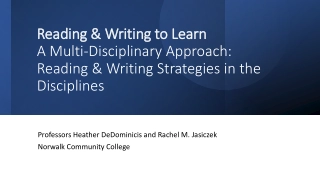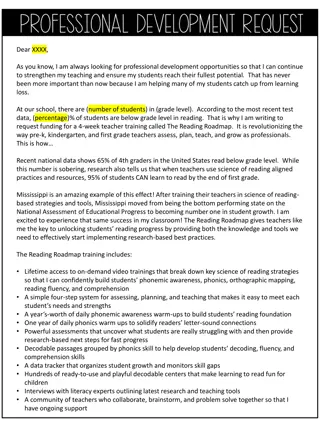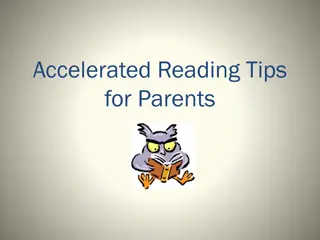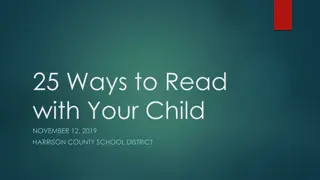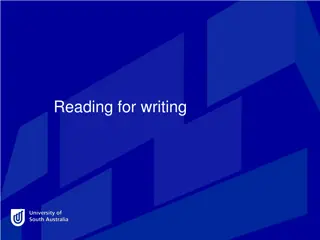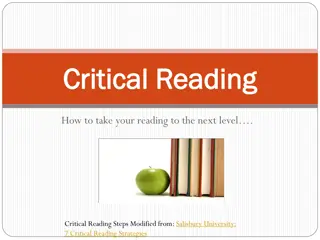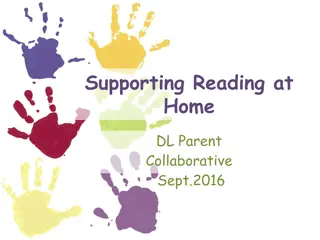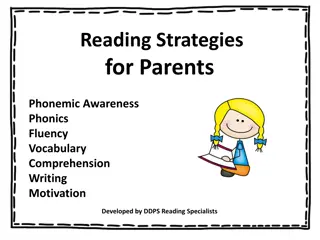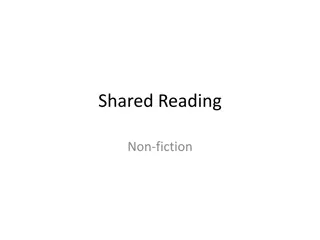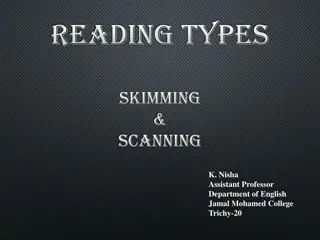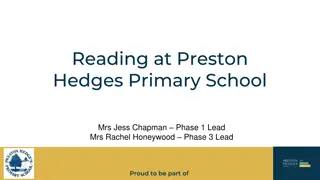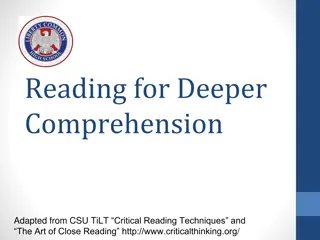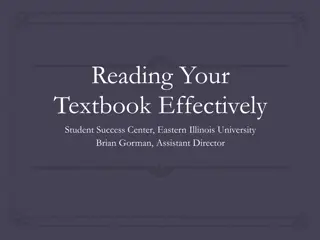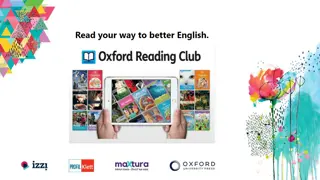Enhancing Reading Skills Through Effective Techniques
Explore the fascinating world of reading skills enhancement with a focus on comprehension, fluency, and meaningful reading. Discover strategies, approaches, and activities to engage learners effectively. Gain insights into how to make reading easier and more enjoyable for learners of all levels.
Download Presentation

Please find below an Image/Link to download the presentation.
The content on the website is provided AS IS for your information and personal use only. It may not be sold, licensed, or shared on other websites without obtaining consent from the author.If you encounter any issues during the download, it is possible that the publisher has removed the file from their server.
You are allowed to download the files provided on this website for personal or commercial use, subject to the condition that they are used lawfully. All files are the property of their respective owners.
The content on the website is provided AS IS for your information and personal use only. It may not be sold, licensed, or shared on other websites without obtaining consent from the author.
E N D
Presentation Transcript
Accocdrnig to an elgnsih unviesitry study the order of letters in a word dosen t mattaer, the only thing thta s iopmrantt is that the frsit and lsat ltteer of eevryword is in the crrecot ptoision. The rset can be jmbueld and one is still able to raed the txet wiohtut defctifuliiy. 2
Today we will be looking at... Quick review of last session What makes reading complex How to extend reading skills Reading for different purposes & comprehension Levels of meaning Designing an activity for a learner 3
What Skills do we need to be a fluent reader? What strategies do fluent readers use? Why is it important to use the phonics approach? Why is reading for meaning important? What is the Language Experience Approach. How is it useful? What is Social Sight Vocabulary & why is it important? What is the Cloze technique? What is a Dolch List? 4
Reading for meaning is the main aim when we read and it s our learner s first goal when learning to read. What do we do when we meet a word we don t understand? Can you remember? 5
Review of our first reading session We need to understand something in order to remember it, but we don t have to read or understand every word. Reading is easier if the subject matter is of interest this is why the Language Experience method works so well, and why it s so important to involve your learner in choosing what to read. When we read, we react we constantly relate/compare what the writer is saying with our own experience this is how we know if it makes sense. 6
How can we help make reading easier and make the content more understandable? Make pictures, any other features of the context Scan for the main ideas of the piece Discuss the main ideas Ask the learner what they think it s about, and what they think of it use of headlines, captions, Don t forget, reading needs to be taught alongside writing and spelling where possible -- not in isolation. 7
Uses the learners interests and experience. Uses their own words and structures. Meaning of the sentence is more important than form. Repetition of words and phrases adds to the effectiveness of the method. 8
Allows the learner to make informed guesses using the context to help. Helps anticipating and predicting to play a part in the learner s reading. Good to involve lots of social sight words, names, places, days of the week etc. 9
The shape of words also plays a part, and the use of capitals to help with recognition. Even the spaces between words can act as clues. Uses all three learning styles. Example: the and 10
Where possible, let your learner choose the material. With a low level learner, decoding words can lose the meaning. Telling the student what the word is helps him/her to recognise it and stay with the flow of the text Skip problem words and go back later, to keep the flow 11
The shape of the letters can vary depending on whether they re hand written or printed, and then printed text can vary a lot with fonts. Some languages are more phonetic than English many letters represent more than one sound in English. Combining letters can change the sound like ch, sh, th, or silent letters like in knight 12
Words that are spelt alike arent always pronounced the same bury, jury. The bandage was wound around the wound. Putting the stress on the correct place in a word can totally change its meaning invalid, object, permit Putting the emphasis in the correct place in a sentence can have an effect Because of the rain, there was no body at the funeral. 13
The context in which a word appears is very important for its meaning. Wind and close can mean very different things! You also need to pay attention to your learner s spoken vocabulary it s much harder to learn words you don t use 14
Discuss with your learner what he/she reads and which aspects of reading they find easy/difficult. Check what reading they would like to be able to do and why. Ask your learner to choose something to read, or bring something in and read it to you. Treat this as a Paired Reading exercise only give as much help as is needed. 15
Learners may be beginner readers but they are not beginner thinkers. 16
Areas you might work on together: Using context clues Dealing with punctuation when reading Sequencing Prediction skills Word endings Plurals Phonics skills e.g. the pronunciation of vowel sounds or word endings 17
Reading for enjoyment Skimming Scanning Proof reading Reading for information reference books, or the Internet Critical reading The goal is reading for meaning so it s important to check comprehension. How do we do that? 18
Remember the goal? Reading for Meaning But don t assume that reading equals understanding. 19
We need to understand what we read in order to remember it. We don t have to get every word and every letter, but it needs to make sense. 20
The blonkie blipped the scritchy flump. What did the blonkie do to the flump? Who blipped the flump? What sort of flump was it? 21
Delete words central to the text. Develop prediction skills, checks for understanding AND increase vocabulary. Even if we leave out the words in the ________you will probably be able to _____________ them. 22
Even if we leave out the words in the .........., you will probably be able to .......... them quickly .......... for it not to interfere too .......... with your understanding of the text. The reader uses all sorts of .......... to fill in the blanks. These may not be the same words the writer had in .......... when she wrote the text, but they will have to .......... the meaning and syntax. The only important thing is that it .......... sense! 24
The team is ................... to stay in the first division. After losing the last three matches, Butterfingers United face possible relegation. The team is .................. to stay in the first division. Don t forget you can also use cloze to teach any number of other things e.g to emphasise grammatical points, or to highlight spelling patterns, or for humorous effect! 25
Getting the right answer doesnt always equate with understanding: To work best, comprehension questions should teach something, and be pitched at the right level. Well-designed questions: Recognise the learner s need to be able to go beyond literal meaning Look to develop the learner s ability to make inferences from the text Aid in the formation of opinions 27
Literal Require a specific literal answer All information is provided in the text No interpretation or opinion is required boat? The answer can only be The boat was green . Example What colour was the 28
Inferential Uses partial information from the text the learner must collect the information that is available and infer an answer from this. Example Who was at the door? . The text tells us that there was a scratching at the door, so a valid answer may be The cat was at the door . 29
Evaluative The learner must make a judgment based on the information in the text and their own opinions. Also includes questions which need the learner to understand the writer s intent and any hidden messages including sarcasm, wordplay, humour and figurative expressions. EG: What do you think? What do you believe? Don t forget to encourage your learner to support their opinions with explanations. 30
The Bears Story In pairs, design an activity for your learner using the story. Be sure to keep your learner s goals in mind and the area(s) your learner needs to work on. 31
We have emphasised from the beginning that confidence is a key skill for our learners so be sure to empower them to abandon a piece of reading if it s inappropriate, or worse, boring! 32


